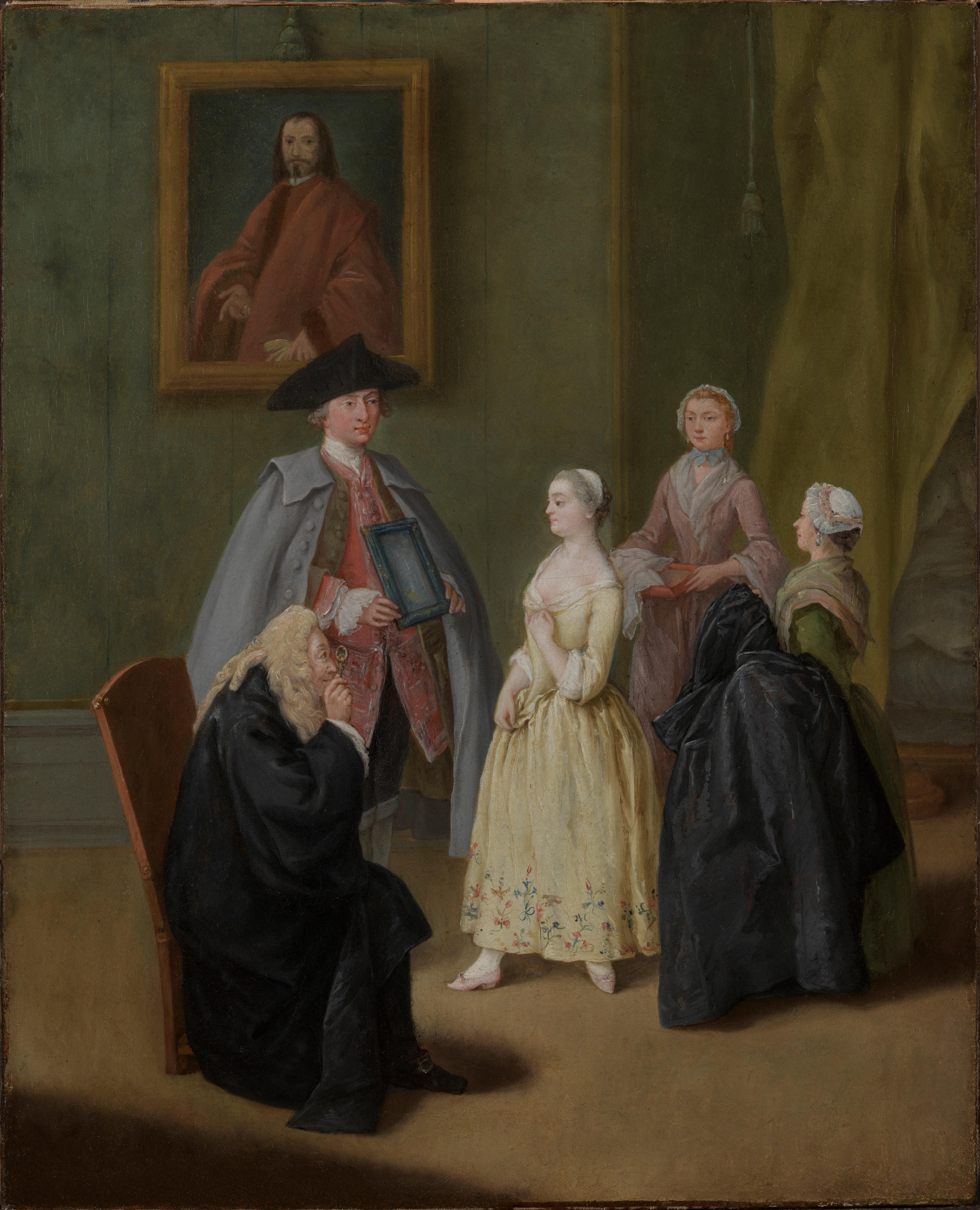Pietro Longhi
b. 1701, Venice
d. 1785, Venice
The Morning Toilette
c. 1750
Oil on canvas
62 x 51 cm (24 3/8 x 20 1/8 in.)
Provenance
Venice, Semenzato, October 1990, lot no. 51,
Private collection, Milan.Description
Pietro Longhi initially worked as a history painter, following his training in the Venetian studio of Antonio Balestra; around 1735 he moved to Bologna where he became a pupil of Giuseppe Maria Crespi. Crespi teachings radically changed his style and starting from around 1740 Longhi specialised in witty depiction of Venetian everyday life, portraying both the opulent interiors of the families of the Republic aristocracy, as well as events of middle and lower class life, and scenes in the lagoon landscape such as in the famous cycle of The hunt in the Laguna; the artist’s career was fundamental in the development of Venetian genre painting in the eighteenth century.
The present painting, hitherto unpublished, is attributed to the Venetian artist Pietro Longhi by Egidio Martini who dated it between 1750 and 1760. The painting represents an interesting addition to his oeuvre: in a room of a Venetian palace a young lady is looking at herself in the mirror after her morning toilette. An elegant young gentleman is holding the mirror, while an old procuratore is attentively observing her with a monocle; two ladies in waiting are bringing her robes and a portrayed ancestor – probably painted by Forabosco – takes part in the scene from his wall.
The painting shows the typical humorous side of Longhi’s production: Longhi characteristically depicts his fellow citizen with a witty spirit that is reminiscent of the British painter William Hogarth and his moralising series satirising the English upper classes, which date back to roughly the same period. For instance, The Toilette, the fourth canvas in the series of six satirical paintings known as Marriage A-la-Mode (The National Gallery, London), by Hogarth, is dated 1743. However, small-format canvases like this one by Longhi, which were hugely popular among patrons and without equals, never showed such an extreme and explicit sarcasm about social customs.
An effective comparison can be made between this work and The Toilette in the Ca' Rezzonico Museum in Venice (inv. 131), dated c. 1760, where the same fashionable young girl, who still looks at herself in the mirror, appears as the protagonist of the scene, just like it happens in other paintings of the same years. The Lady at Her Toilette in The Art Institute of Chicago (inv. 1947.433), which may be a little preceding (late 1740s), can represent another example.
The young man who stands in the background and bears the small mirror is often present among some steady side characters, so he turns out to be a recurring figure as well, whom Longhi probably perfected in his well-known preparatory drawings. In fact, he was also an excellent draughtsman and just over 170 sheets of drawings are attributed to him (the most sizeable corpus, made up of 145 drawings, belongs to the Correr Museum in Venice), many of which fortunately survive today.
Another similar “routine” mise-en-scene can be found in The morning of a Venetian lady, an earlier painting (c. 1741) in the Gallerie dell’Accademia Museum in Venice (inv. 464). Here the main characters, members of the different Venetian social classes, are portrayed in a domestic scenography setting which is composed of compact, simplified spaces and illuminated by artificial light. Above all, they are described as it happens in the contemporary plays by the famous comedy writer Carlo Goldoni, who was interested in depicting women, their innovative centrality, and the unparalleled freedom they enjoyed in the Serenissima, just as much as the painter was.
Longhi's figures show characteristically delicate features and are attired in sumptuously depicted fabrics, attesting to his distinctive interest in textures and in tapestry, as can be deduced from his dedication to the decoration of sophisticated backgrounds in his paintings. His palette is typically Venetian, bright and clear in tone, and the luminous paint surface appears to be applied in layered glazes. The soft, pearlescent colour harmony marks the zenith of the artist’s aptitude. In addition, the chromatic spectrum in question is combined with the great delicacy of touch in every detail, the lens that the seated procuratore holds in this painting’s foreground to name one, which is observed by Longhi with lucid precision and forensic detachment, in line with the Enlightenment attitude of that time.





